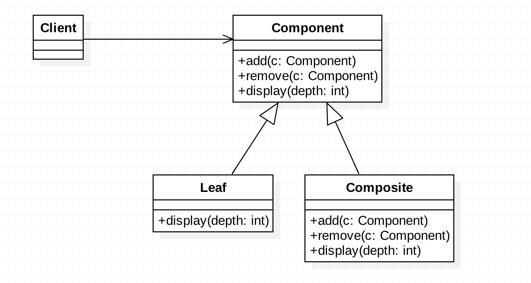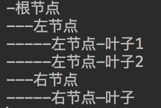设计模式之组合模式
一.组合模式的定义
组合模式将对象组合成树状结构以表示“整体-部分”的层次关系;
组合模式使得用户对单个对象和组合对象的访问具有一致性。
二.组合模式的角色及职责
1.Component
这是组合中的对象声明接口,在适当的情况下,实现所有类共有接口的默认行为。声明一个接口用于访问和管理Component子部件。
2.Leaf
在组合中表示叶子节点对象,叶子节点没有子节点。
3.Composite
定义有枝节点行为,用来存储子部件,在Component接口中实现与子部件有关的操作,如增加(add)和删除(remove)等。
组合模式的UML图:

实例代码如下:
1 public abstract class Component { 2 private String name; 3 4 public void setName(String name) { 5 this.name = name; 6 } 7 8 public String getName() { 9 return name; 10 } 11 12 protected abstract void add(Component c); 13 14 protected abstract void remove(Component c); 15 16 protected abstract void display(int depth); 17 }
1 public class Leaf extends Component { 2 3 public Leaf(String name){ 4 setName(name); 5 } 6 7 @Override 8 protected void add(Component c) { 9 //叶子节点不能添加子节点,因此不做实现 10 } 11 12 @Override 13 protected void remove(Component c) { 14 //叶子节点不能添加子节点,因此不做实现 15 } 16 17 @Override 18 protected void display(int depth) { 19 String temp = ""; 20 for (int i=0; i<depth; i++){ 21 temp += "-"; 22 } 23 System.out.println(temp + getName()); 24 } 25 }
1 public class Composite extends Component { 2 private List<Component> children = new ArrayList<>(); 3 4 public Composite(String name){ 5 setName(name); 6 } 7 8 @Override 9 protected void add(Component c) { 10 children.add(c); 11 } 12 13 @Override 14 protected void remove(Component c) { 15 children.remove(c); 16 } 17 18 @Override 19 protected void display(int depth) { 20 String temp = ""; 21 for (int i=0; i<depth; i++){ 22 temp += "-"; 23 } 24 System.out.println(temp + getName()); 25 26 for (Component child : children){ 27 child.display(depth + 2); 28 } 29 } 30 }
以下是测试类:
1 public class CompositeTest { 2 3 public static void main(String[] args) { 4 Component root = new Composite("根节点"); 5 6 Component leftChild = new Composite("左节点"); 7 Component rightChild = new Composite("右节点"); 8 9 Component leftChild_1 = new Leaf("左节点-叶子1"); 10 Component leftChild_2 = new Leaf("左节点-叶子2"); 11 12 Component rightChild_leaf = new Leaf("右节点—叶子"); 13 14 leftChild.add(leftChild_1); 15 leftChild.add(leftChild_2); 16 17 rightChild.add(rightChild_leaf); 18 19 root.add(leftChild); 20 root.add(rightChild); 21 22 root.display(1); 23 } 24 25 }
运行结果如下:

三.组合模式的使用场景
1.想要表示对象的整体-部分的层次结构。
2.希望用户忽略组合对象与单个对象的不同,用户将统一的使用组合结构中的所有对象。


 浙公网安备 33010602011771号
浙公网安备 33010602011771号